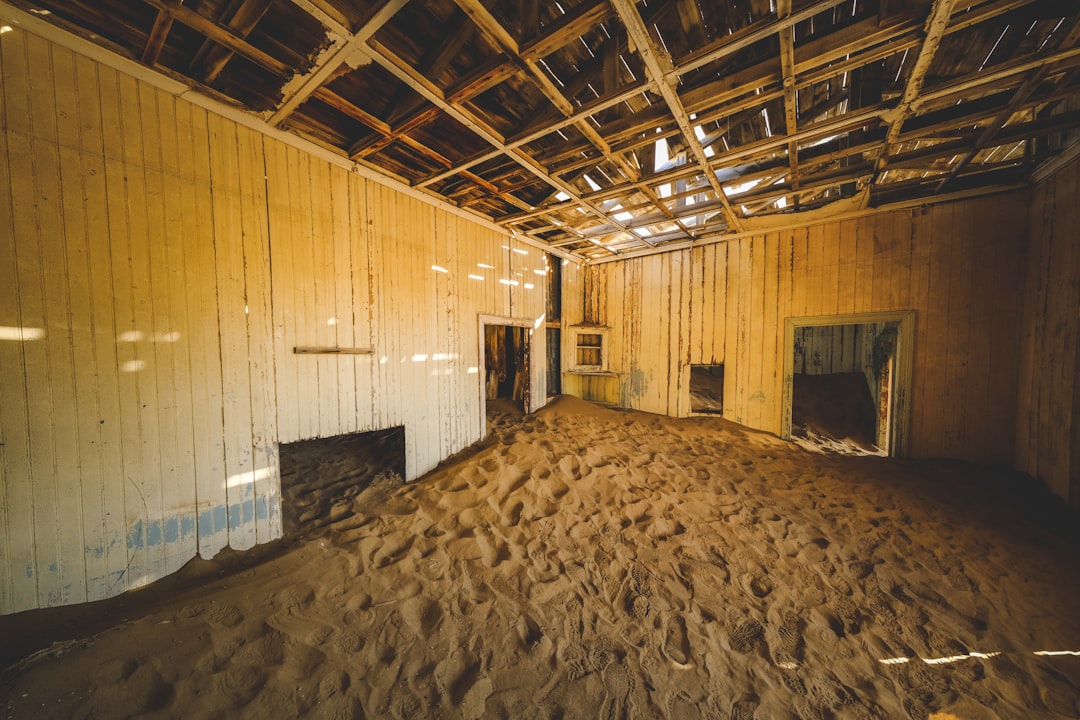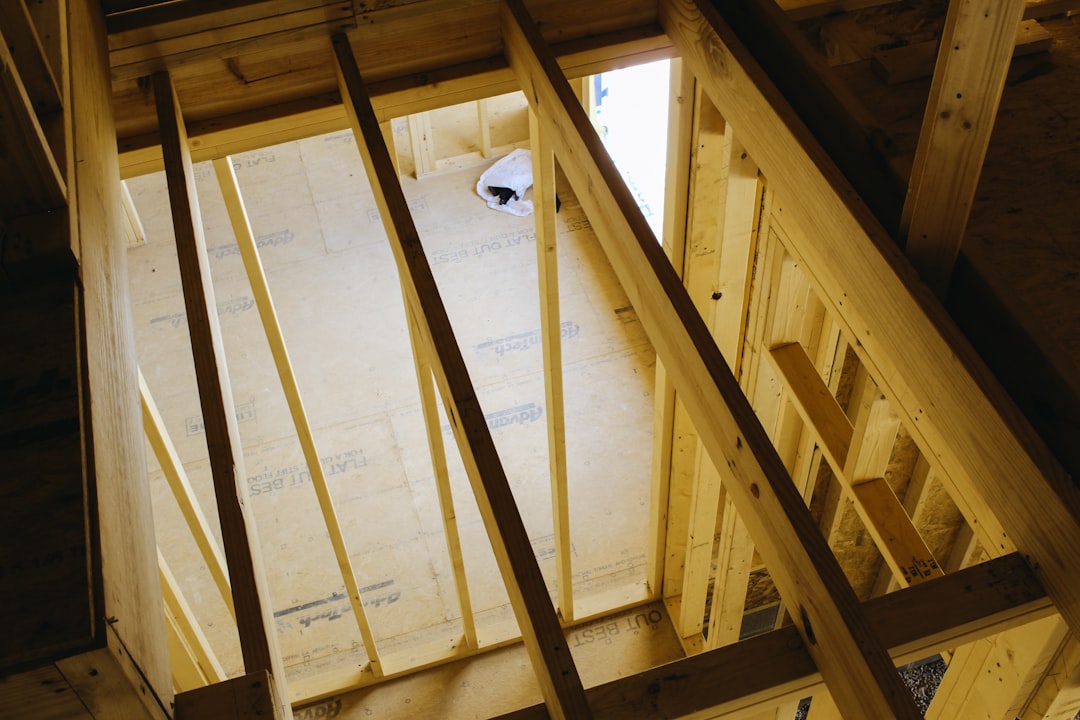

Engage prospects with a scan and streamline customer engagement with FREE QR code marketing tools by Sona – no strings attached!
Create a Free QR CodeFree consultation

No commitment

Engage prospects with a scan and streamline customer engagement with FREE QR code marketing tools by Sona – no strings attached!
Create a Free QR CodeFree consultation

No commitment

For many commercial insulation contractors, qualified prospects are lost when interest is shown offline but never tracked back to digital systems. Missed connections from physical interactions, such as walk-throughs, sign-in sheets, or printed specs, result in incomplete CRM records and wasted follow-up effort. QR codes help resolve this by turning every touchpoint into a source of actionable digital data.
Start by mapping your most common offline touchpoints to specific digital destinations. Printed spec sheets can open calculators or spec comparison tools; jobsite signage can point to safety certifications or bid request forms; proposal packets can offer digital approvals that sync to your CRM. The key is to remove friction at the moment of interest so the person who is ready to engage can do so in one scan.
A platform designed for contractors streamlines these steps. Sona QR connects scans to company records, enriches intent signals, and passes data into sales journeys so no legitimate lead remains anonymous or untracked. With dynamic QR codes, you can update destinations without reprinting materials, keeping field content current and engagement high. Start creating QR codes for free.

Commercial insulation contractors routinely encounter offline-to-online disconnects. Prospects and specifiers often evaluate materials on-site, browse branded print-outs, or review compliance documents. Unless they submit a form, their interest remains invisible, which means valuable demand signals and business opportunities are regularly lost.
QR codes close these gaps by converting physical assets into gateways to measurable digital actions. A scan can pull up a spec comparison, launch a bid request, or share contact info. Each interaction records time, place, and context, which gives your team the visibility needed for timely, relevant follow-up.
These capabilities put an end to invisible interest. Instead of hoping prospects return to your website, you meet them at the point of evaluation, capture their intent, and move them forward in a managed, measurable way.

Commercial insulation work spans complex sales cycles, multiple stakeholders, and frequent document updates. The right QR formats make it easier to turn each physical artifact into a digital accelerant that is both useful and trackable.
Use formats that align with your most frequent interactions. Jobsite signs should prioritize document access or safety certifications. Proposal packets should emphasize approvals and feedback forms. For relationship-building, include vCards and pre-filled email or SMS links that simplify contact and callback requests.
Dynamic QR codes are especially important for insulation contractors. Specs, certifications, building codes, rebate programs, and energy standards evolve. With a dynamic code, your printed materials stay evergreen since you can update the destination in seconds without reprinting assets. Sona QR supports all of these formats in one place, making it easy to manage and scale.

Growth for commercial insulation contractors depends on being present at the exact moments when stakeholders evaluate options, validate safety requirements, or compare bids. Many of these moments happen around physical materials or in on-site conversations, which historically left no digital trace. By embedding QR codes into high-traffic assets, you can capture leads that would otherwise stay anonymous and build a clear path into your sales pipeline.
Map the customer journey across your field operations and marketing materials, then attach QR codes to the places that already get attention. Make each scan highly purposeful. For example, a spec sheet that opens an interactive comparison tool or a maintenance report that opens a scheduling form. This keeps scanning relevant and immediately useful rather than decorative.
Contractors who align QR media with these physical touchpoints give every decision-maker a direct, measurable path into the digital funnel. The result is stronger attribution, faster cycles, and higher conversion from in-person interest to booked work.

Even high-intent interactions are often missed when they happen on paper, at events, or during walk-throughs. QR codes transform these moments into measurable signals that enrich your CRM and accelerate follow-up.
Start by rolling out a few high-impact use cases where you know engagement already exists. Then expand across job sites, marketing materials, and service teams once you have a clear view of what drives scans and conversions. Use dynamic destinations to A/B test content and refine the journey for each audience segment.
By deploying these use cases, contractors capture engagement signals that were previously invisible. The resulting data flows into your sales and marketing pipelines with context, enabling prioritization, personalization, and more confident revenue forecasting.
Each scan is a data point that reveals intent, context, and timing. By placing unique QR codes across different assets and journey stages, you can automatically create segmented audiences that mirror real-world behavior. This enables precise intent-driven retargeting and follow-up across email, SMS, and paid media, which improves conversion rates and shortens sales cycles.
Start by identifying your core audience groups. Commercial insulation often involves multiple stakeholders, such as facilities managers, general contractors, architects, property owners, and procurement teams. Use distinct codes and tailored CTAs for each group so your campaigns can separate maintenance queries from new construction bids or retrofit research.
With Sona QR, every code becomes a smart entry point that captures high-fidelity data. You can identify facility teams versus architects, distinguish retrofit from new construction interest, and target campaigns based on actual behavior rather than assumptions.
QR codes unite channels that traditionally operate in silos. Print, signage, events, and even invoices can now lead to digital destinations that capture intent and feed your performance metrics. This is especially powerful for commercial insulation, where long cycles and distributed stakeholders make attribution challenging.
Think of QR codes as the connectors that bring your offline and online ecosystems together. Each scan tells you which physical asset worked, who engaged, and what action they took. Combined with dynamic destinations, you can update offers and content mid-campaign without reprinting materials, which gives your team agility in fast-moving bids or standards updates.
Sona QR acts as the central hub for this approach. You can manage all codes, monitor performance across channels, and sync data with your CRM and ad platforms, turning every campaign into a connected offline-to-online funnel.
A structured approach ensures you capture high-intent engagement and avoid common pitfalls like generic CTAs, poor placement, or untracked scans. Use the following steps to plan, launch, and optimize QR campaigns that align with your growth goals.
Clarify the business problem and the outcome you want. For a contractor, this might be speeding up estimate approvals, increasing RFP submissions from jobsite stakeholders, or driving maintenance teams to register warranties.
Pick the format based on update needs and tracking requirements. Most contractor scenarios benefit from dynamic codes because documents, pricing, and certifications change often.
Design that fits the environment increases scans and trust. Clear CTAs tell the audience exactly what they get from scanning, which reduces hesitation.
Place codes where high-intent interactions already occur and tailor the message to the physical context. Put larger codes on signage and smaller ones on brochures or proposal covers.
Start with a manageable set of placements, then expand based on performance. Use analytics to refine CTAs, reposition underperforming assets, and update content to reflect what scanners want most.
A centralized platform like Sona QR ensures every scan is captured and enriched from the start, which makes optimization continuous and data-driven. As you scale across more assets and teams, this foundation lets you measure impact, prove ROI, and reallocate budget to what works best.
Attribution is difficult in commercial insulation because so much research and coordination happens offline. QR codes turn those moments into measurable interactions that you can follow through to pipeline and revenue. See Sona’s guidance on offline attribution. The goal is not only to track scans but to connect them to buyer journeys, conversations, and closed business.
With the right analytics, you can determine which assets, placements, and audiences are moving deals forward. A scan on a proposal cover is a strong buying signal; a scan on material packaging might indicate installer-level interest; a scan on a safety board may reflect active jobsite engagement. Treat each differently and optimize accordingly.
Sona QR captures high-fidelity scan details and Sona.com links those interactions to buyer journeys using identity resolution and multi-touch attribution. Together they convert real-world engagement into insights that drive performance, budget allocation, and forecasting.
Moving beyond one-off deployments requires process, training, and a continuous improvement mindset. The most successful contractors treat QR as a core part of their go-to-market, not a novelty. They design with intent, deploy where scans will matter most, and automate follow-up so no signal is wasted.
Focus on tips that match your media mix and typical buyer journey. If proposals and maintenance visits are your most valuable moments, then prioritize digital approvals and warranty registrations. If trade shows drive a large share of your pipeline, then invest in event-specific codes and segmented follow-up.
Sona QR integrates with popular CRMs so scan events can trigger workflows, lead scoring, and sales alerts in real time. One creative example that works well in this vertical is adding QR codes to invoices for warranty registration or maintenance plan sign-ups. Another is using QR codes on mechanical room placards for quick access to service requests and compliance updates.
For commercial insulation contractors, QR codes are a practical way to convert offline interest into measurable action. They put calculators, approvals, compliance documents, and case studies one scan away from the jobsite, while capturing data that would otherwise disappear. This raises conversion rates, improves follow-up, and gives leaders the visibility needed to scale what works.
With a thoughtful strategy, every proposal, sign, package, and report becomes a digital gateway that advances the buyer journey. Combined with a platform like Sona QR, you can manage codes centrally, update content dynamically, integrate with your CRM, and attribute revenue back to real-world interactions. The result is a modernized, data-informed growth engine that captures every ounce of buyer intent across the field.
QR codes have transformed the commercial insulation contractor industry by turning traditional marketing and client communication into dynamic, measurable growth opportunities. Whether it’s streamlining project documentation access, enhancing client engagement on-site, or simplifying maintenance tracking, QR codes replace cumbersome processes with instant, mobile-friendly solutions that capture real-time data and boost operational efficiency. Imagine knowing exactly which project materials or service offers generate the most client inquiries—and being able to optimize your outreach instantly.
With Sona QR, you can create dynamic, trackable QR codes in seconds, update your campaigns without reprinting, and directly connect every scan to lead generation and project conversions. No wasted resources, no missed connections—just smarter, more profitable client interactions that propel your business forward. Start for free with Sona QR today and turn every scan into a new opportunity for growth and success.
QR codes help commercial insulation contractors convert offline interest into measurable digital actions, improve lead tracking, accelerate workflows, and enable timely and relevant follow-up by capturing data from physical touchpoints.
Contractors can place QR codes on jobsite signage, proposal packets, material packaging, and marketing materials to link prospects to digital tools, approvals, and contact forms, turning physical interactions into trackable leads that feed into their CRM.
Useful QR code formats include web links to calculators and RFP forms, vCards for contact sharing, digital forms for approvals and service requests, SMS or email links for quick communication, app downloads, and direct access to documents like safety sheets and compliance guides.
Dynamic QR codes allow contractors to update landing pages or content without reprinting materials, keeping information current and engagement high despite changes in specs, certifications, or regulations.
They use scan analytics to monitor when, where, and how QR codes are scanned, attribute interactions across sales cycles, optimize content in real time, and integrate scan data with CRMs to connect leads to revenue.
Key steps include defining clear use cases and goals, choosing the right QR code type, branding and testing codes, strategically placing them with tailored calls to action, and monitoring performance to optimize and scale.
By assigning unique QR codes to different assets and journey stages, contractors can collect detailed intent data and segment audiences for personalized follow-up across email, SMS, and paid media.
Effective placements include proposal packets, jobsite signs, material packaging, trade show materials, maintenance reports, and direct mail to capture engagement at critical decision points.
Integration enables automatic lead enrichment, sales alerts, workflow triggers, and seamless tracking of buyer journeys from offline engagement to closed deals.
QR codes simplify access to contact info, warranty registrations, maintenance scheduling, and compliance documents, speeding up response times and reducing friction for clients and field teams.
Use Sona QR's trackable codes to improve customer acquisition and engagement today.
Create Your FREE Trackable QR Code in SecondsJoin results-focused teams combining Sona Platform automation with advanced Google Ads strategies to scale lead generation

Connect your existing CRM

Free Account Enrichment

No setup fees
No commitment required

Free consultation

Get a custom Google Ads roadmap for your business






Launch campaigns that generate qualified leads in 30 days or less.
